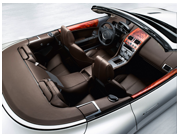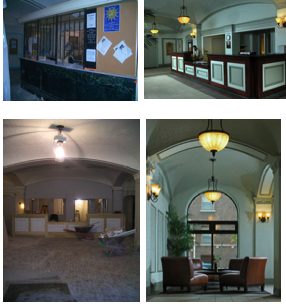We caught up with Bark, a physician from Evanston, who let us in on her green fairytale.
When Bark’s old house flooded in 1999, it had to be demolished because of the carpet of mold that nature chose to install in the aftermath. Somewhere along the way Bark asked a contractor she knew from spin class, David Dwyer, for advice.
“At that point, I said ‘I want a straw bale house and a composting toilet,’” Bark says. “David said, ‘You know you’re crazy and Evanston won’t go for it.’” But it was possible to build an eco-friendly house that the city—and their neighbors—would go for.
So, while straw bales and a commode-nourished garden were out, Bark ended up with a husband, Dwyer, and one very sustainable and healthy home, which she now shares with her son Ayal, 12 from a previous marriage, and stepson, Joey, 15, from Dwyer’s previous marriage. Here’s a quick look at the house and the lifestyle that inspired it.
ended up with a husband, Dwyer, and one very sustainable and healthy home, which she now shares with her son Ayal, 12 from a previous marriage, and stepson, Joey, 15, from Dwyer’s previous marriage. Here’s a quick look at the house and the lifestyle that inspired it.
Floor
Wood, and lots of it. For the earth’s sake Bark and Dwyer chose Lyptus. The wood grows as fast as bamboo—a darling building material of the green movement thanks to its good looks and sustainability. But Lyptus also flexes and feels like the best dance floors. “I dance and I teach and I choreograph and we do dance parties for fundraisers for different charitable organizations,” Bark says.
Stove
An induction stove uses electromagnets to heat pots and pans, making it much more energy-efficient than gas and electric ranges. “It cooks really quickly, as fast as a microwave basically,” says Bark. And it’s safe. “I can actually put my hand on the range area and the water boils as my hand is sitting there.” The downside: you have to use magnetic cookware, which means copper and aluminum are out.
Stairwell
All the wood came from leftover projects. It doesn’t match like manufactured wood might, but it still looks elegant and classy.

Outside
Driveway
Bark and Dwyer installed drains across the width of their concrete driveway to catch rainwater. The drains deliver the water to their yard—which is filled with native prairie plants rather than grass. That means some of the water that lands in their yard might just end up back in natural water table instead of the sometimes over-taxed storm sewer system.
Roof
What looks like classic cedar shingles, is actually made from recycled tires. The shingles cost 10-15 percent more than shake, says Dwyer, but will last 50 years — about 40 years longer than shake.
Trees and Windows
The trees and windows work together to help regulate the temperature of the house in summer and winter. A large bank of windows lets heat and light in during the winter. But in the summer, when the last thing you want is more heat, the trees bloom and shade the windows from the sun. “(The house) is like 65 degrees without any air conditioning,” Bark says.
Geothermal Heating and Cooling
Geothermal systems give traditional heating and cooling systems a head start in regulating the temperature of a home by tapping into the moderate year-round temperature of the earth with a collection of wells sunk beneath the home. Bark’s home has 12 wells which allow the system to heat or cool air from the earth’s constant 55 degrees instead of the air temperature, which swings wildly in the summer and winter.
Wind
Bark and Dwyer were some of the first to try residential wind power. Unfortunately, the turbines they purchased have never functioned properly. They do look nice, though. “They’re really expensive art installations,” Bark says.

